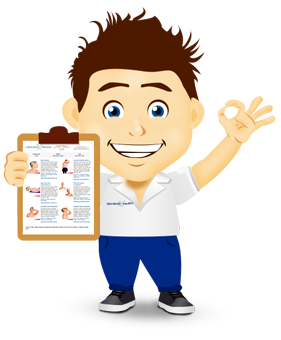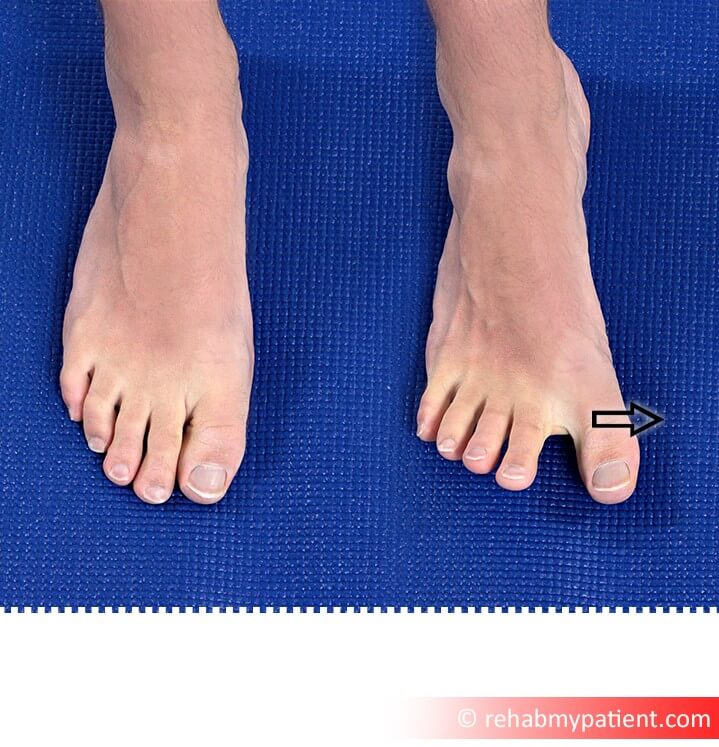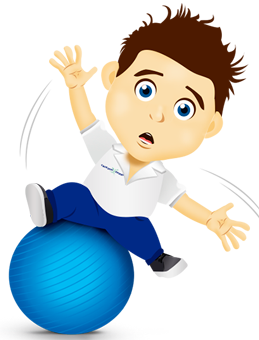
Next steps:
Feel free to read the advice sheet below! To get the full benefit click on 'Start treatment'. By starting the treatment you will get access to weekly rehab programmes online for FREE. You will be able to track your progress, pain levels and we will remind you to do your exercises every day!
If the joint connecting your big toe to your foot is swollen, sore or has a bump, you might be dealing with a bunion. It’s an extremely common problem affecting middle to late-aged women. This deformity is often attributed to wearing shoes that are narrow and tight, as well as high heels. 90% percent of the time the bunion will occur in women because they are wearing shoes that are too small, especially with a pointed toe. Tight shoes cause a number of other foot problems like calluses, corns and hammertoes.
When it comes to bunions, the base of your big toe will get bigger and stick out. The skin covering the toe will become tender and red. Wearing shoes will become painful because the joint will flex with every step. As the bunion gets larger, the more it will hurt to walk. Bursitis could end up setting in causing even more pain. The big toe might angle toward the second toe or move all the way underneath it. The skin underneath the foot can become painful and thicker. Pressure from the big toe could end up forcing the secondary toe out of alignment. Advanced bunions can make the foot look grotesque. Severe bunions make it difficult to walk. Eventually, arthritis might set in and the pain will become chronic.
Bunion Anatomy
Bunions will generally start as a bump that protrudes from the big toe. Over the course of time, bunions will get to the point where the big toe isn’t properly aligned with the other toes and range of motion is minimal. Once mobility is limited, hallux limitus occurs (limited movement of the big toe). If the big toe gets stiff, you will lose the normal toe-off during gait. Altered gait can cause a number of other problems in the lower limb and up the spine.

How toTreat Bunions:
- Prevention
The best thing you can do is to prevent bunions from happening in the first place. To minimize the chance of getting a bunion in the first place, you want to avoid placing your foot into shoes that don’t fit. Choose shoes conforming to your feet's shape. Shoes that have wide instep, soft soles and broad toes are ideal. Avoid shoes that are tight, short and pointed sharply, as well as those that have heels higher than 2.25 inches in height.
- Wear Roomy Shoes
For those who already have the bunion, make sure to wear shoes that provide ample room to avoid putting pressure on the bunion. Having the shoes stretched professionally can help to alleviate pain. By wearing protective pads to protecting the affected area, the cushion will work wonders.
- Physical Therapy
Mobilisation to the medial and lateral border of the foot, gait retraining, mobilization to the big toe, and strengthening exercises to the instep arch can all help to minimize the progression of a bunion.
- Splint
Night splints are available that hold your big toe in a straight position. Also wedges can be placed between your toes to keep them straight. This can help reduce the onset of bunions.
- Orthotics
Insoles, or orthotic devices can either be off the shelf or made bespoke for your foot. They can reduce pronation (the instep arch of your foot dropping in when walking), and improve position of your big toe, as well as shifting load away from the painful area.

- Surgery
Bunions that have progressed to the point where walking is difficult will need surgery. The surgery will realign ligaments, bones, tendons and nerves so that the big toe can return to its correct position. Most of the time, the surgery is done on a same-day basis with a simple ankle-block anesthesia.
Tips:
- Avoid wearing small or narrow shoes.
- Heels higher than 2.25 inches should be avoided.
- Loose ligaments in the feet lead to bunions. Strengthening exercises can help.
- Rheumatoid arthritis is attributed to bunions.
- Those who have a family history of bunions are susceptible to the condition themselves.
- There is one particular exercise that can strengthen your big toe muscle to pull the big toe into alignment – ask your therapist to prescribe it, available on rehabmypatient.com.

